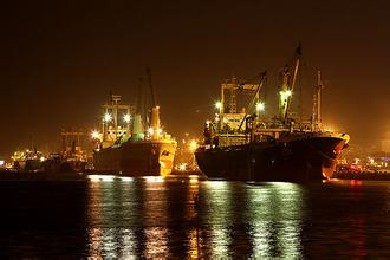Union Finance Minister P. Chidambaram on 27 February presented the Economic Survey 2012-13 in the Lok Sabha of the Parliament. World trade in both goods and services reached and surpassed pre-crisis levels in 2011. However, the deceleration in world growth and trade in 2012 and forecast of only a gradual upturn in global growth by international institutions reflected a weak and slow recovery for world trade.
India's exports, which had surpassed pre-crisis levels within a year in 2010-11 with a record 40.5 percent growth, continued growing even in 2011-12, but were finally affected by the global slowdown in 2012-13 with exports declining even more at - 4.9 percent in the first ten months than the -3.5 per cent recorded during 2009-10.
Based on GDP data from the expenditure side, the year-to-year growth for real exports of goods and services decreased from a peak of 36 percent in the first quarter of 2011 to 4 percent in the third quarter of 2012. Merchandise exports have slowed down more; from 34 percent year to year in the first quarter of 2011 to -6 percent year to year in the third quarter of 2012.
Two reasons for the decline in export growth were found out: (i) external factors or partner country incomes, (ii) changes in exchange rate. GDP growth of partner countries slowed down significantly (from more than 6 percent year to year in the first quarter of 2010 to less than 1 percent in the third quarter of 2012).
Gold Imports and Policy Measures: India is one of the largest consumers of gold in the world with consumption increasing from 721.9 tonnes in 2006 to 933.4 tonnes in 2011 and 612 tonnes in the first three quarters of 2012, accounting for around 27 per cent of world gold consumption in 2011, and 26.4 per cent in 2012 (total of first three quarters). In the case of export of gold jewellery, the major export destinations include the UAE (57.9 percent), Hong Kong (14.1 percent), and the USA (12.0 percent).
Imports of equipment for initial setting up or substantial expansion of fertilizer projects fully exempted from basic customs duty of 5 percent for a period of three years up to 31 March 2015; and basic customs duty on some watersoluble fertilizers and liquid fertilizers other than urea reduced from 7.5 percent to 5 per cent and from 5 per cent to 2.5 percent.
Concessional import duty available for installation of mechanized Handling Systems and Pallet Racking Systems in mandis or warehouses extended for horticultural produce.
Basic customs duty on plant and machinery imported for setting up or substantial expansion of iron ore pellet plants or iron ore beneficiation plants reduced from 7.5 percent to 2.5 percent.
Basic customs duty increased on standard gold bars; gold coins of purity exceeding 99.5 percent and platinum from 2 percent to 4 percent and on non-standard gold from 5 percent to 10 percent.
New e-BRC Initiative: A major EDI initiative the e-BRC launched which would herald electronic transmission of foreign exchange realization from the respective banks to the Directorate General of Foreign Trade (DGFT) server on a daily basis. The exporter will not be required to make any request to the bank for issuance of a bank export and realization certificate (BRC).
As per the schedule of Tariff Liberalisation Programme (TLP) under SAFTA (South Asia Free Trade Area), India has brought down its peak tariff rates to 5 percent w.e.f. 1 January 2013.
India - EU Broad Based Trade and Investment Agreement (BTIA): The 15th round was held during 4-7 December 2012 in New Delhi. Chief negotiator level meeting was held on 29-30 January, 2013 in New Delhi.









